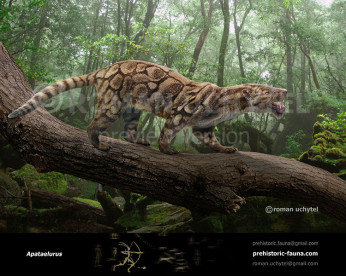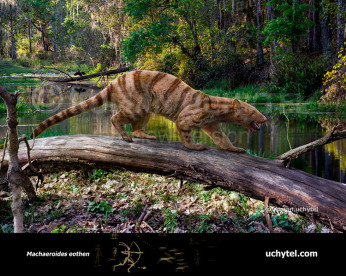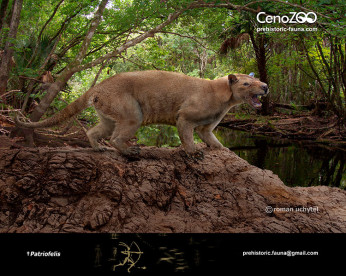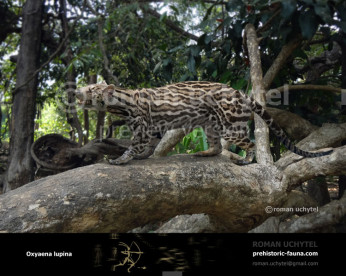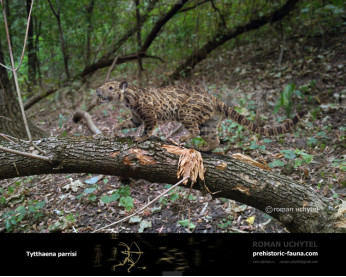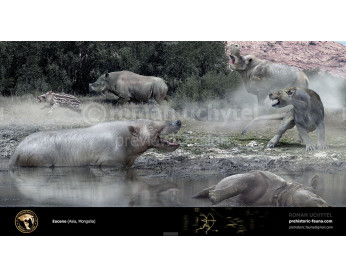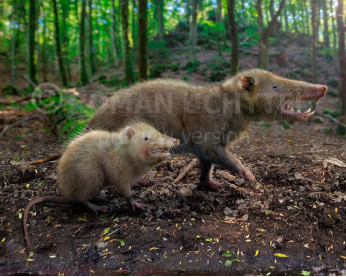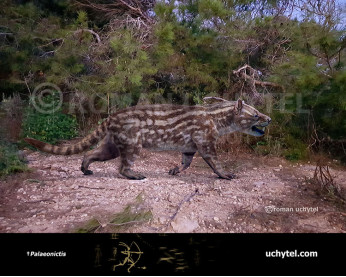Sarkastodon
4545Sarkastodon (Sarkastodon Granger, 1938)
Order: †Oxyaenodonta
Family: †Oxyaenidae
Dimensions: length - 3 m, height - 125 сm, weight - 200 - 600 kg
Temporal range: lived during the upper Eocene, approximately 48.6 to 37.2 million years ago.(Mongolia)
Sarkastodon is an extinct genus within the family Oxyaenidae that lived during the upper Eocene, approximately 37 million years ago. It was a large, carnivorous animal that lived in what is today Mongolia. It is estimated to have been about 500 kilograms in weight, somewhat bigger than any living bear in average body size and near the maximum possible size for terrestrial carnivorous mammals. It is seen today in animals such as the Kodiak bear, which reaches that size only in captivity. Sarkastodon is assumed to have had a bear-like appearance, though only skulls and jawbones are known. Sarkastodon, like creodonts in general, was probably a hypercarnivore that preyed on large mammals in its range during the Late Eocene, such as brontotheres, chalicotheres, and rhinoceroses.
Sarkastodon (Sarkastodon Granger, 1938)
Order: †Oxyaenodonta
Family: †Oxyaenidae
Dimensions: length - 3 m, height - 125 сm, weight - 200 - 600 kg
Temporal range: lived during the upper Eocene, approximately 48.6 to 37.2 million years ago.(Mongolia)
Sarkastodon is an extinct genus within the family Oxyaenidae that lived during the upper Eocene, approximately 37 million years ago. It was a large, carnivorous animal that lived in what is today Mongolia. It is estimated to have been about 500 kilograms in weight, somewhat bigger than any living bear in average body size and near the maximum possible size for terrestrial carnivorous mammals. It is seen today in animals such as the Kodiak bear, which reaches that size only in captivity. Sarkastodon is assumed to have had a bear-like appearance, though only skulls and jawbones are known. Sarkastodon, like creodonts in general, was probably a hypercarnivore that preyed on large mammals in its range during the Late Eocene, such as brontotheres, chalicotheres, and rhinoceroses.

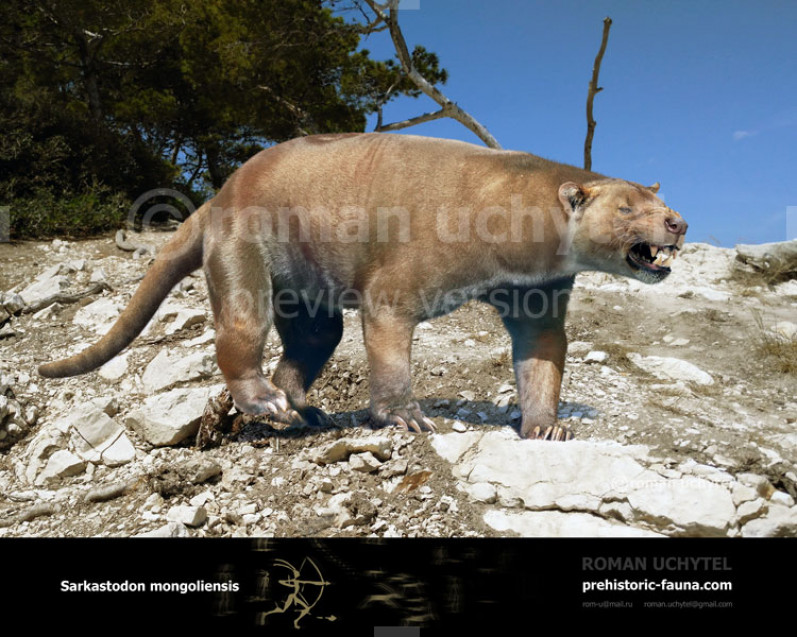
-797x638.jpg)
-797x638.jpg)
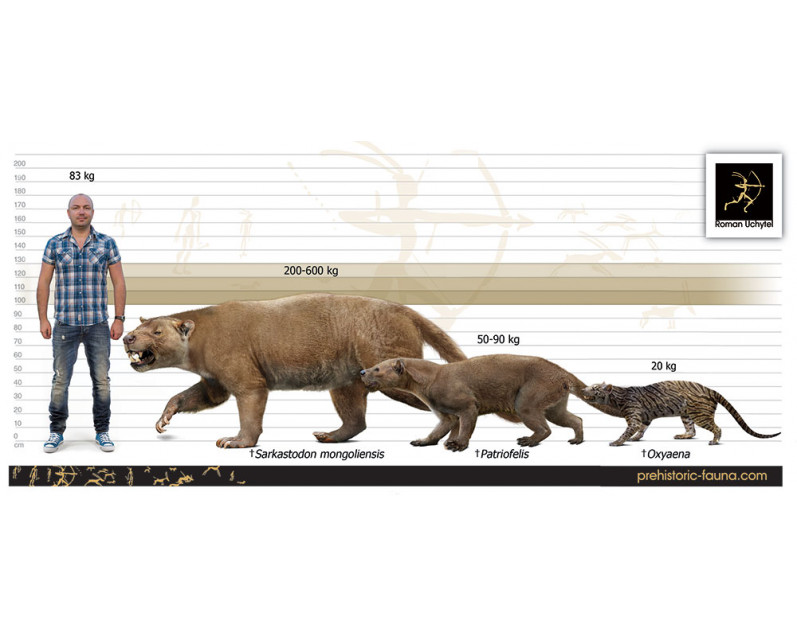

-70x56.jpg)
-70x56.jpg)

